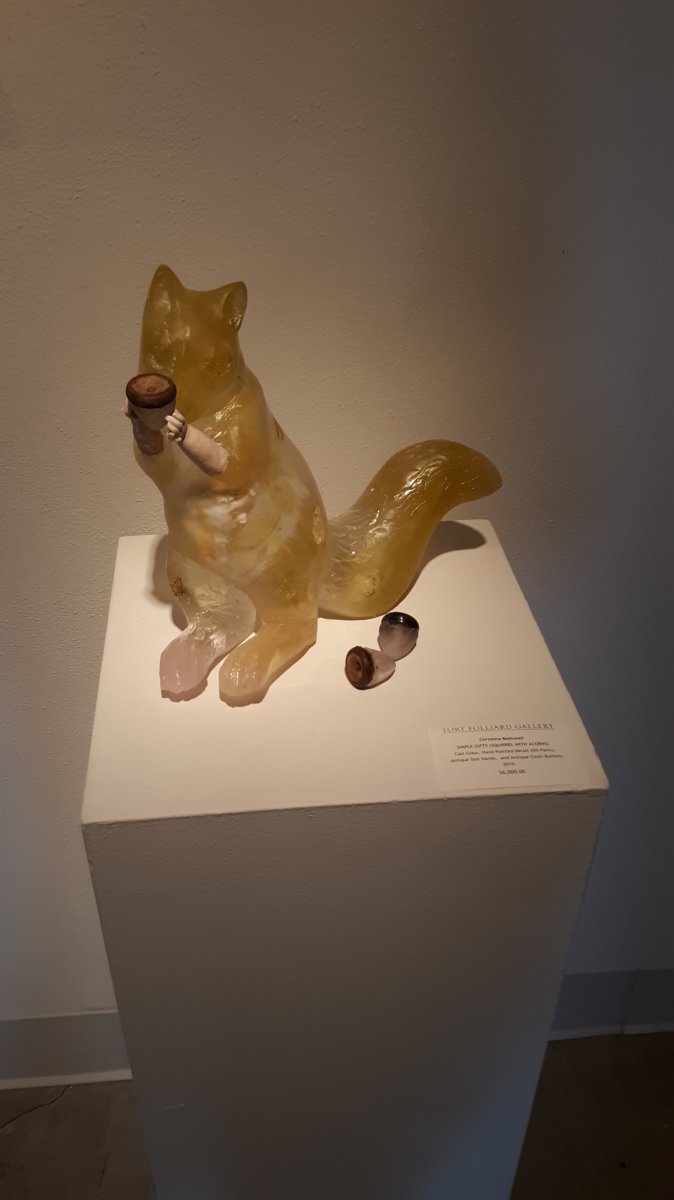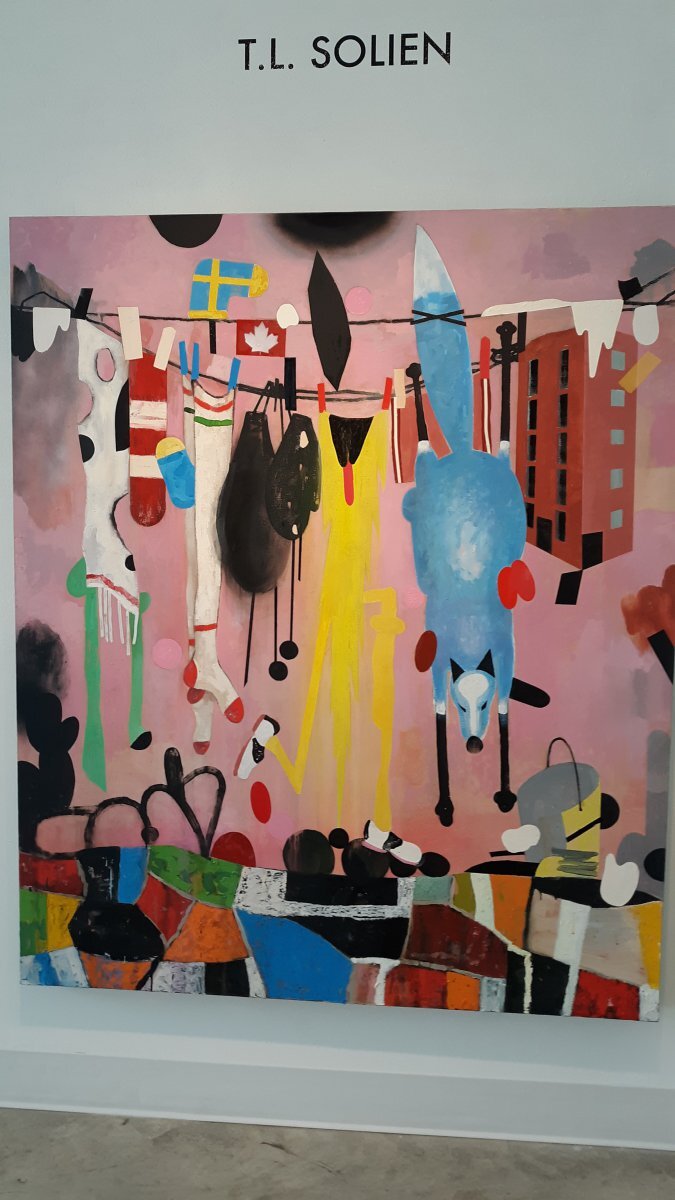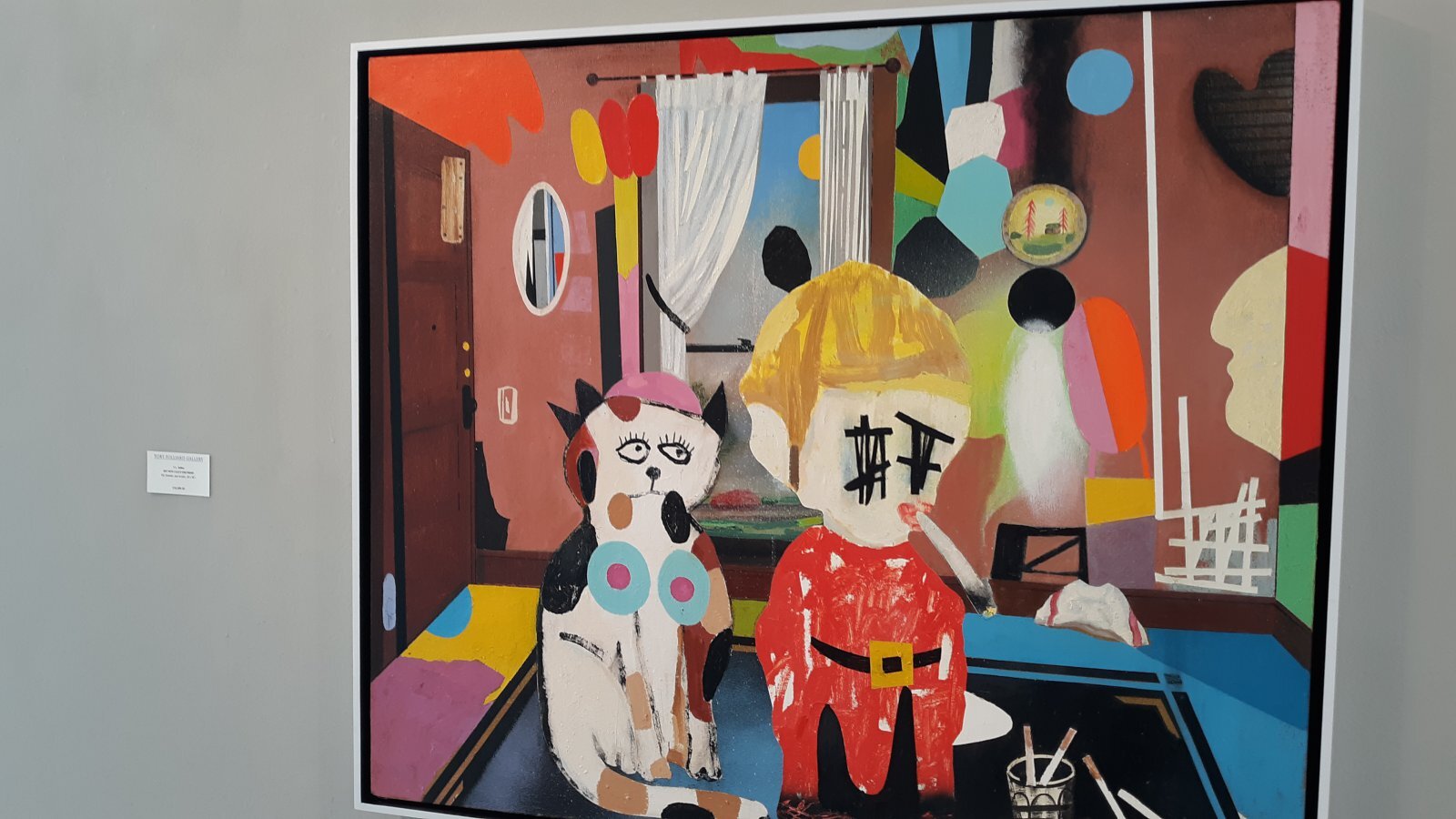To read this article on Urban Milwaukee, please click HERE.
Beasts of the Painted World
The painters in Tory Folliard’s group show capture a natural world filled with strange creatures.
Mythic Menageries Exhibit. Photo taken October 23rd, 2019 by Catherine Jozwik.
The Tory Folliard Gallery’s current exhibition, Mythic Menageries, features 11 local, regional and international artists whose works capture the duality of the natural world, as a magical place filled with fabulous colors and imagination, but also with dark psychological, environmental, and political undertones.
On display through November 23, the exhibit includes, paintings, sculptures, and other works by Christina Bothwell, Mark Chatterly, El Gato Chimney, Laurie Hogan, Flora Langlois, Michael Noland, Anne Siems, Aniela Sobieski, Fred Stonehouse, Tom Uttech, and Robin Whiteman.
Siems, Langlois and Sobieski portray their female subjects in harmony with and empowered by nature, living in utopian forests with animals as spirit guides. Sobieski’s departure from traditional portraiture illustrates birds and clouds painted on women’s faces, perhaps to suggest lofty goals and aspirations. Noland’s bold gouache-on-paper works highlight animals highly symbolic to many cultures, such as the lion and the owl.
Mythic Menageries showcases several paintings by celebrated Saukville artist Tom Uttech, whose current retrospective exhibit Into the Woods opened at theMuseum of Wisconsin Art October 12. In his meditative paintings, Uttech embraces the remote beauty of North Woods landscapes in Wisconsin and Canada, which he’s spent significant time exploring. Like many other Mythic Menageries works, the paintings explore how changes to natural habitats effect animal and plant species. In one of Uttech’s large-scale paintings, a figure with a deer head and a human body hugs its knees, perhaps in desperation.
Chatterly’s “Big Blue Dog” sculpture, a 70-inch canine with impossibly long forelegs, stands sentry in a corner near the windows while another small dog sculpture sits next to it. Is the canine fulfilling his “watchdog” duties, protecting the gallery’s works?
Like his colleague Fred Stonehouse, Milan, Italy resident El Gato Chimney’s surrealist paintings focus on weird winged beast/human hybrids. While Stonehouse sets his canvas paintings against black backgrounds and uses ornate wooden frames found in antique shops, Chimney’s watercolor and gouache paintings on paper are lighter colored and reminiscent of book illustrations. Whiteman’s four small porcelain ceramic sculptures also consist of half-human, half-animal figures. For example, ”Peccaries” depicts a headless woman with pigs in place of feet. Bothwell’s three colored cast glass figures of fish and a squirrel with acorns, also incorporate unusual materials like old toys and doll parts.
“The thread connecting all of these artists is undeniable, but it is their differences and uniquely individual visions that are the strength of this group,” writes Stonehouse in the exhibit statement. “Their common interest in the expressive and conceptual efficacy of animals as a subject links their works together, but the highly internalized content and personal richness of their imaginations are evidence of the continued relevance of animals and the natural world as worthwhile territory for the artists to explore.”
Mythic Menageries Exhibit. Photos taken October 23rd, 2019 by Catherine Jozwik.















